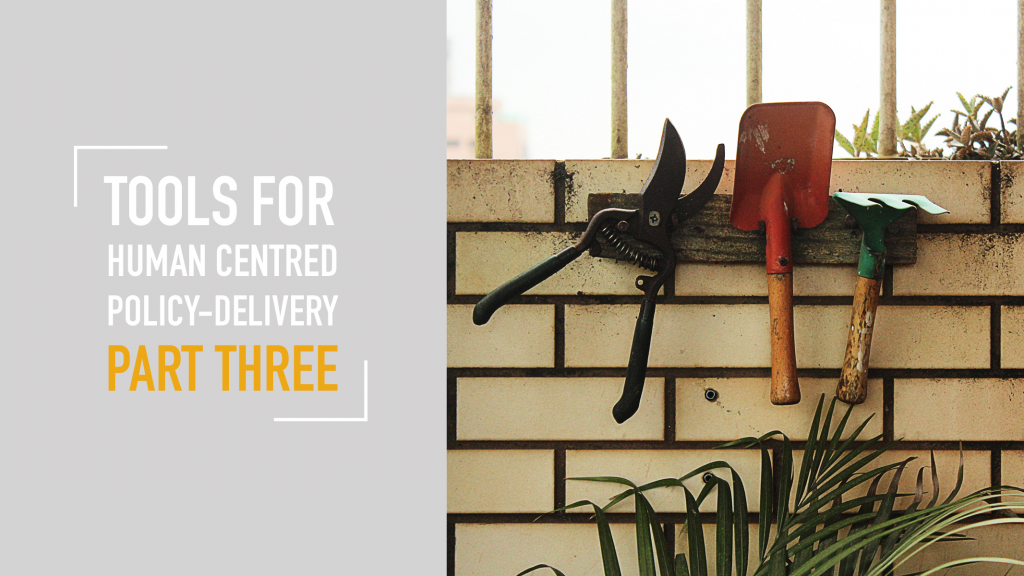In our last blog, we introduced you to a selection of tools and methods to design and test a new policy in a human-centred policy-making process.
This blog focuses on tools that help policy-makers to implement and evaluate a newly designed policy. Following the structure of the last blogs in this series, we will provide you with a short introduction to the tools as well as real-life examples where these approaches have already been applied.
Iterate for the better
At the heart of a human-centred policy-making process lies constant feedback and iteration. By learning new things about what works and what does not, existing policy ideas and concepts can be adapted to achieve better results.
In the following we provide you with a selection of tools that can support that process.
Citizen-centred communication
- What it is: Rolling out a new policy should be accompanied by a communication plan that helps policy-makers to reach the citizens the new policy targets. Wording and visuals therefore should be co-created and tested with the target group.
- Real-life examples: The US Department of Veterans Affairs developed a health platform for veterans. To ensure its improvement, the platform was constantly tested with the users, i.e. veterans. In the next step, the Department’s team took a similar approach to empower the users to better navigate the platform: they involved veterans in designing the corresponding communication (e.g. newsletters) for the launch of the new platform. This led to an increase of newsletter subscriptions by half a million.
- Here are some general tips to better communicate with and for citizens.
Regular Retrospectives
- What it is: After each step of the policy-making process the team and relevant stakeholders should come together, reflect, collect learnings and develop changes for the next steps and iterations. One method to structure a Retrospective is the Starfish-Method: In this case, feedback is structured along with five questions: What should stay the same? What do we need more of? What do we need less of? What do we need to start? What do we need to stop?
- Real-life example: In 2014 a team at the US Department of Justice undertook the task to redesign, organize and launch the website, which included more than 450,000 web pages, documents, and media files. The team chose an agile approach with twelve iterations. After every iteration, the team organized a setting for a structured Retrospective. After the fifth iteration, the team became much more efficient with the setting and decided to involve selected stakeholders. This helped the team to even better understand the problems and needs of website users and led to a better user experience.
- Here you can find tips on how to set up a retrospective for your team.
Constant Feedback
- What it is: Constantly, the team should review whether the policy implemented still addresses the needs of citizens. To do that, a methodology should be selected that allows all stakeholders to provide feedback easily.
- Real-life example: In Portugal, public administrations use digital touchpoints to enable citizens to use public services. These touchscreen modules not only help citizens to find information or book appointments with civil servants but also empower the public administration to gather feedback and insights on how its services can be improved.
- Here are tips to generate high-quality citizen feedback.
This is the last blog of our blog series on human-centred policy delivery. In this series, we introduced you to our approach of human-centred policy delivery and deep-dived into tools you could use when applying the process yourself.
If you have any questions or want to discuss elements of our blog series with us, please don’t hesitate to get in touch. We look forward to hearing from you!
